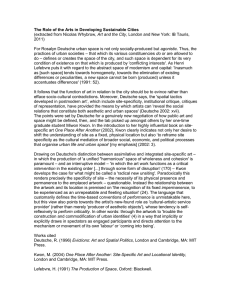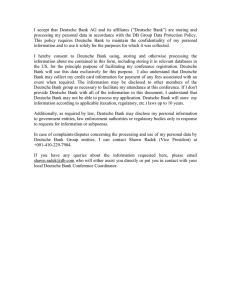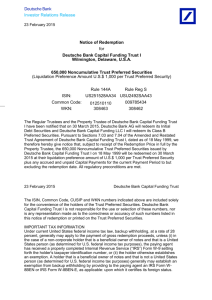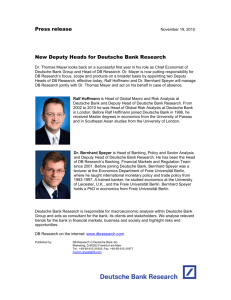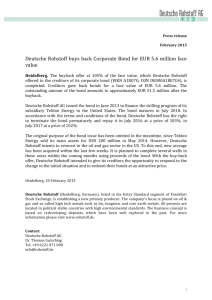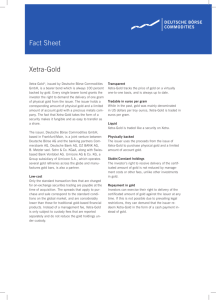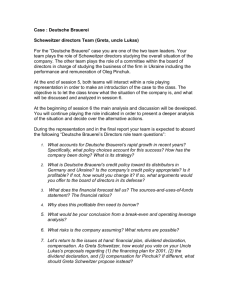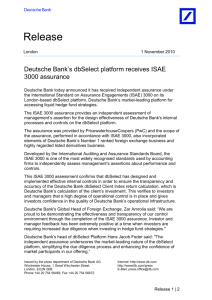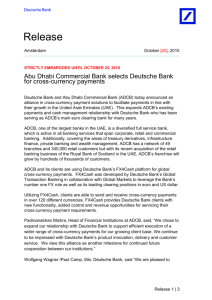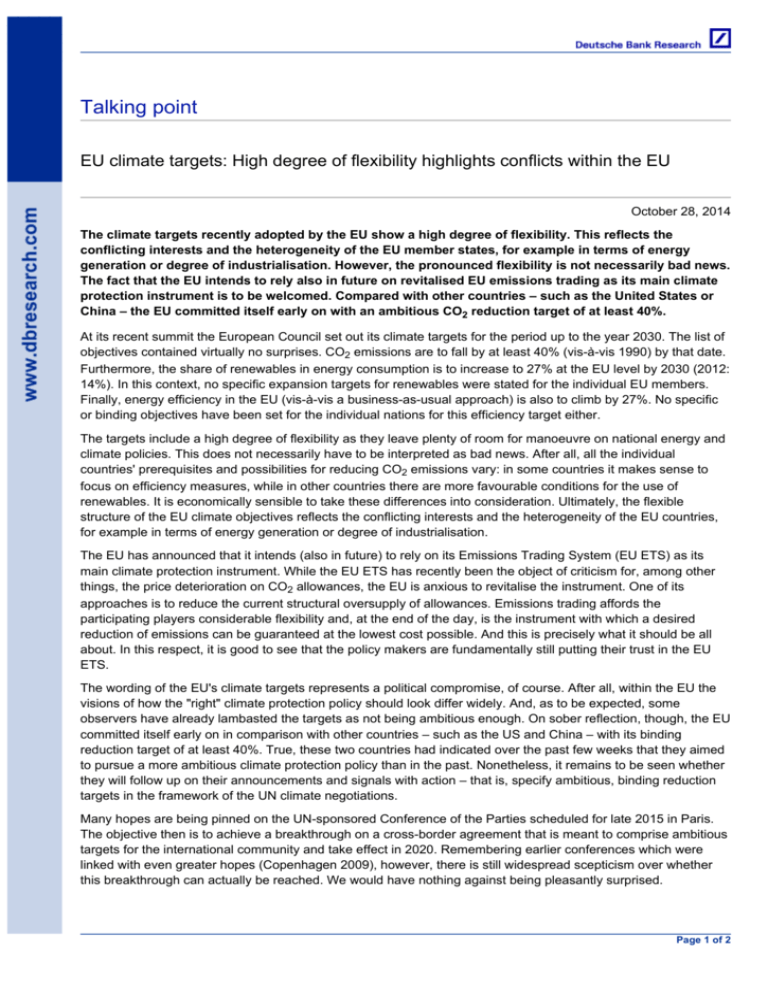
Talking point
EU climate targets: High degree of flexibility highlights conflicts within the EU
October 28, 2014
The climate targets recently adopted by the EU show a high degree of flexibility. This reflects the
conflicting interests and the heterogeneity of the EU member states, for example in terms of energy
generation or degree of industrialisation. However, the pronounced flexibility is not necessarily bad news.
The fact that the EU intends to rely also in future on revitalised EU emissions trading as its main climate
protection instrument is to be welcomed. Compared with other countries – such as the United States or
China – the EU committed itself early on with an ambitious CO2 reduction target of at least 40%.
At its recent summit the European Council set out its climate targets for the period up to the year 2030. The list of
objectives contained virtually no surprises. CO2 emissions are to fall by at least 40% (vis-à-vis 1990) by that date.
Furthermore, the share of renewables in energy consumption is to increase to 27% at the EU level by 2030 (2012:
14%). In this context, no specific expansion targets for renewables were stated for the individual EU members.
Finally, energy efficiency in the EU (vis-à-vis a business-as-usual approach) is also to climb by 27%. No specific
or binding objectives have been set for the individual nations for this efficiency target either.
The targets include a high degree of flexibility as they leave plenty of room for manoeuvre on national energy and
climate policies. This does not necessarily have to be interpreted as bad news. After all, all the individual
countries' prerequisites and possibilities for reducing CO2 emissions vary: in some countries it makes sense to
focus on efficiency measures, while in other countries there are more favourable conditions for the use of
renewables. It is economically sensible to take these differences into consideration. Ultimately, the flexible
structure of the EU climate objectives reflects the conflicting interests and the heterogeneity of the EU countries,
for example in terms of energy generation or degree of industrialisation.
The EU has announced that it intends (also in future) to rely on its Emissions Trading System (EU ETS) as its
main climate protection instrument. While the EU ETS has recently been the object of criticism for, among other
things, the price deterioration on CO2 allowances, the EU is anxious to revitalise the instrument. One of its
approaches is to reduce the current structural oversupply of allowances. Emissions trading affords the
participating players considerable flexibility and, at the end of the day, is the instrument with which a desired
reduction of emissions can be guaranteed at the lowest cost possible. And this is precisely what it should be all
about. In this respect, it is good to see that the policy makers are fundamentally still putting their trust in the EU
ETS.
The wording of the EU's climate targets represents a political compromise, of course. After all, within the EU the
visions of how the "right" climate protection policy should look differ widely. And, as to be expected, some
observers have already lambasted the targets as not being ambitious enough. On sober reflection, though, the EU
committed itself early on in comparison with other countries – such as the US and China – with its binding
reduction target of at least 40%. True, these two countries had indicated over the past few weeks that they aimed
to pursue a more ambitious climate protection policy than in the past. Nonetheless, it remains to be seen whether
they will follow up on their announcements and signals with action – that is, specify ambitious, binding reduction
targets in the framework of the UN climate negotiations.
Many hopes are being pinned on the UN-sponsored Conference of the Parties scheduled for late 2015 in Paris.
The objective then is to achieve a breakthrough on a cross-border agreement that is meant to comprise ambitious
targets for the international community and take effect in 2020. Remembering earlier conferences which were
linked with even greater hopes (Copenhagen 2009), however, there is still widespread scepticism over whether
this breakthrough can actually be reached. We would have nothing against being pleasantly surprised.
Page 1 of 2
Talking Point
Author: Eric Heymann (+49) 69 910-31730
more information on Sectors and Resources
Talking Point - Archive
This commentary was originally published in German on October 27 and translated on October 28.
© Copyright 2014. Deutsche Bank AG, Deutsche Bank Research, D-60262 Frankfurt am Main, Germany. All rights reserved. When quoting please cite “Deutsche
Bank Research”.
The above information does not constitute the provision of investment, legal or tax advice. Any views expressed reflect the current views of the author, which do
not necessarily correspond to the opinions of Deutsche Bank AG or its affiliates. Opinions expressed may change without notice. Opinions expressed may differ
from views set out in other documents, including research, published by Deutsche Bank. The above information is provided for informational purposes only and
without any obligation, whether contractual or otherwise. No warranty or representation is made as to the correctness, completeness and accuracy of the
information given or the assessments made.
In Germany this information is approved and/or communicated by Deutsche Bank AG Frankfurt, authorised by Bundesanstalt für Finanzdienstleistungsaufsicht. In
the United Kingdom this information is approved and/or communicated by Deutsche Bank AG London, a member of the London Stock Exchange regulated by the
Financial Services Authority for the conduct of investment business in the UK. This information is distributed in Hong Kong by Deutsche Bank AG, Hong Kong
Branch, in Korea by Deutsche Securities Korea Co. and in Singapore by Deutsche Bank AG, Singapore Branch. In Japan this information is approved and/or
distributed by Deutsche Securities Limited, Tokyo Branch. In Australia, retail clients should obtain a copy of a Product Disclosure Statement (PDS) relating to any
financial product referred to in this report and consider the PDS before making any decision about whether to acquire the product.
Page 2 of 2

